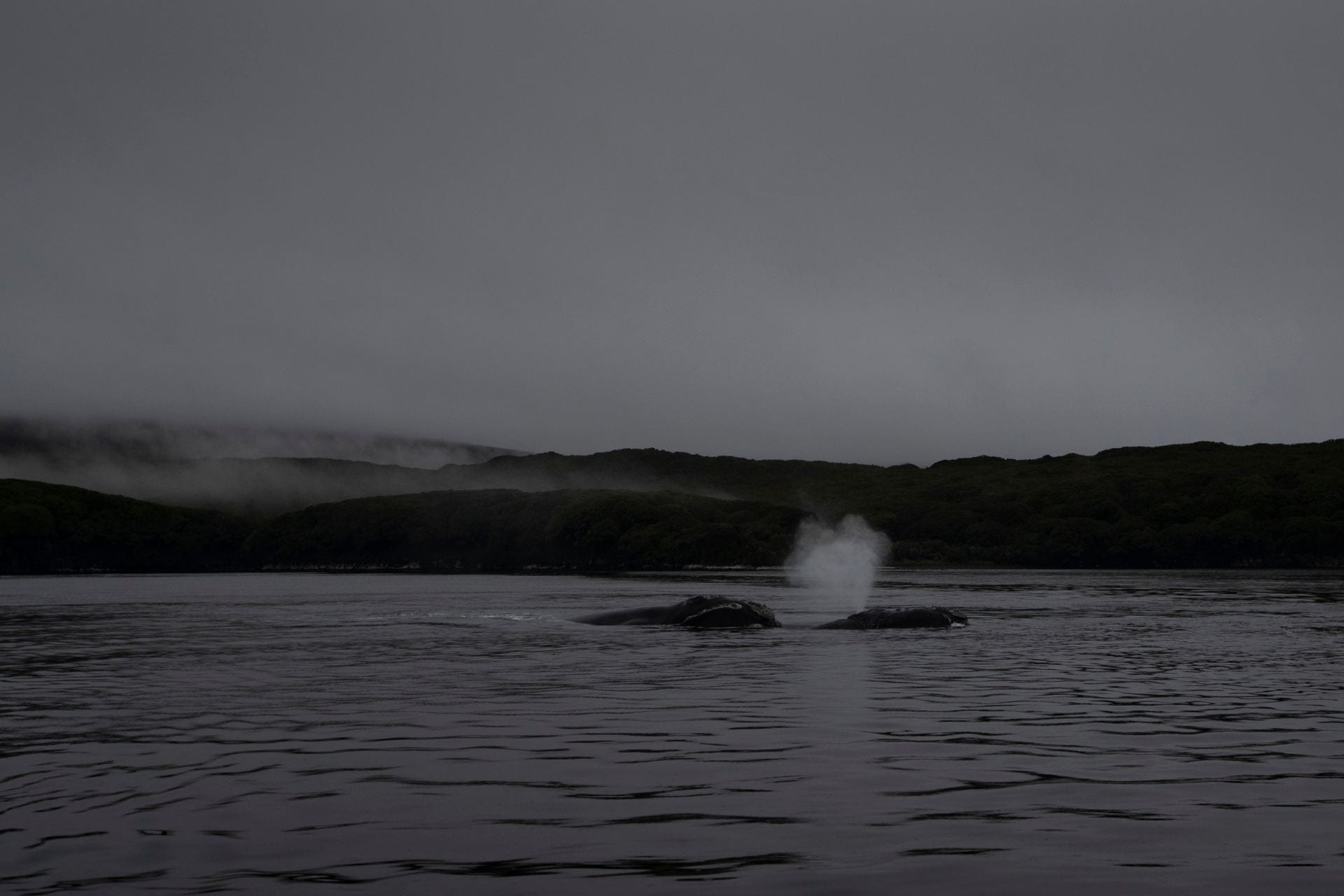Coming to the Auckland Islands/Maukahuka is like travelling back in time as well as across the ocean. The hills are clad in rata forest, often shrouded in mist, and hoiho and New Zealand sealions swim through the sheltered harbour of Port Ross. As someone who always wondered what Aoteroa New Zealand looked like before people arrived, it’s a joy to be somewhere that gives us a glimpse of this history.
Misty morning at the Auckland Islands, credit Richie Robinson

It’s this lack of people that made it the most important winter habitat for tohorā in Aotearoa New Zealand’s waters. While people hunted and killed those whales that made mainland New Zealand their winter home, some tohorā managed to find refuge down here in the Auckland Islands. Those tohorā had babies, who then returned to the Auckland Islands to breed as well. And that’s one of the most striking things about being back here this winter, compared with last time I was here 10 years ago: there are so many mums and calves! In previous years, there was more of a balance between mums and calves and social groups/single whales. It could be due to timing: pandemic related delays mean we are here several weeks later than in previous surveys. Perhaps some of the socialising whales have already come through.
Mum and calf southern right whale, credit Richie Robinson

Don’t get me wrong, I’m not complaining. Lots of babies is a good sign of a growing population. And tohorā mums are wonderful and tolerant mums; they rest at the surface while their babies swim around them, slap them with little flippers, they lie on their backs while baby rests on their bellies. It is pretty adorable. These mums also invest a lot in their babies: in the first few months of life, the whales will grow a couple of centimetres per day while mum’s size shrinks by about 25%. I’m looking forward to seeing how many of the mums we see today were calves we saw in previous expeditions. The first expedition to the Auckland Islands by the University of Auckland was in 1995, and annual surveys were conducted during the winters of 1995-1998 and 2006-2009. Based on genetic samples we collected in previous expeditions and today, we’re able to see a continuation of the lineages that found refuge here from whaling.
As well as helping fund this research, marine conservation organisation Live Ocean has launched a whale sighting campaign around mainland NZ to help add to our knowledge about where these whales go. For more information on the research or how to report a sighting go to www.liveocean.com